I recently came across a discussion from last year on the blog The Hooded Utilitarian. It’s from a series of articles called The Anniversary of Hate, where different writers discuss “the worst comic ever.” The title of this particular entry, by Alex Buchet, speaks for itself: Spirou and Fantasio: Racism for Kids.
I’d encourage you to go over and read it in full, but here are some excerpts:
Tome and Janry’s success is owed to the genuinely disciplined mastery of slapstick comedy, satire, and adventure combined with imaginative use of science-fiction and fantasy, all illustrated in a style that marries meticulous attention to detail with a wild fluidity of caricatured movement.
And yet something in this most accomplished comic strip stinks, something it shares with far too wide a selection of European comics for children.
That something is racism.
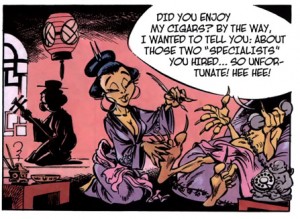
Every ugly sinophobic, Orientalist stereotype is trotted out; Mandarins with four-inch fingernails wearing dragon masks, trick Buddha statues, Fu Manchu moustaches, a disgusting willingness to eat scorpions, cobras and tarantulas, barefoot coolies, pigtails, submissive cheongsam-clad lovelies…enough! My stomach can’t take any more.
The total effect is made worse by the high skill of the execution. Such was the case for such racist vileness as the films Birth of a Nation or the Nazi-era The Jew Suss. On its own minor level, Spirou et Fantasio à New York joins this unsavory company.
Yikes! And finally:
apart from the odd Black bystander, all the ethnics in [Spirou et Fantasio à New York] are cowardly, treacherous and greedy, with no redeeming features.
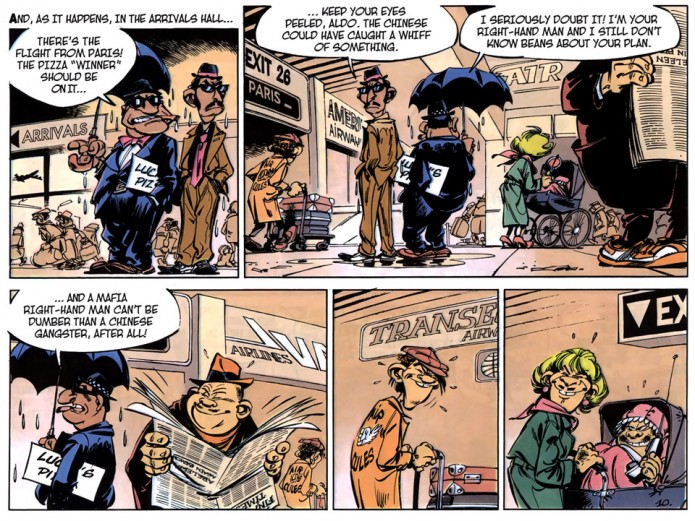
The post led to a long discussion (curiously, none of the participants seem to have realized that the album is available in English from Cinebook), where Fantagraphics’ Kim Thompson was particularly eloquent in his defense. To summarize his position, the album is meant as a parody of existing clichés about New York and America. Everything in it is deliberately silly, and the racial caricatures are meant to be understood as playful, completely over-the-top stereotypes with no relation to reality. As long as its readers realize that, and aren’t influenced to think that this is what Italians or Chinese are really like, it is a relatively harmless if perhaps somewhat tasteless book.
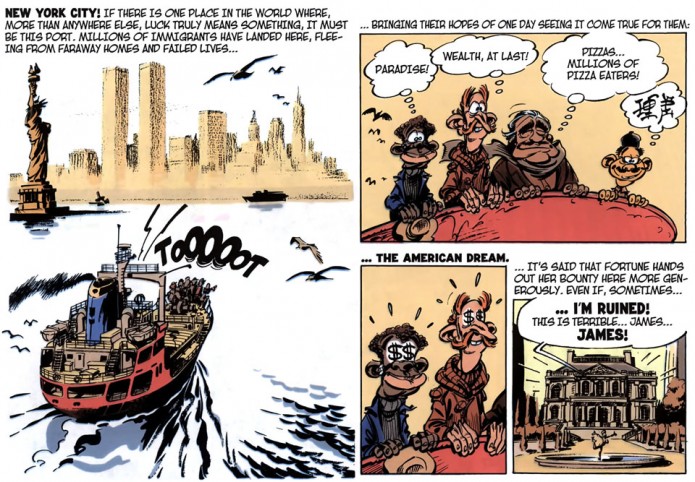
Belatedly adding to the discussion, I think we can get a better sense of Tome & Janry’s intent by looking at some of their other albums. For example, the depiction of New York can be understood more clearly when we consider how they portrayed the Soviet Union and Moscow in the 1990 album Spirou à Moscou (Spirou #42, “Spirou in Moscow”).
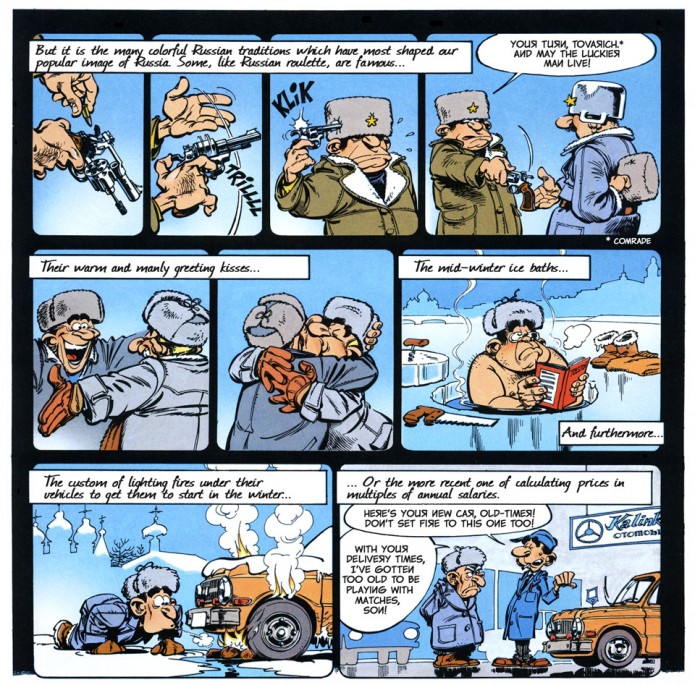
In comics, this sort of preposterous national caricaturing is perhaps most famous from Asterix, and it’s generally understood to be all in good fun.
Spirou in New York was a very popular album, and Don Vito Cortizone became one of the main recurring villains, both in Tome & Janry’s albums and in the 1993 cartoon. His first return was in 1991’s Vito la déveine (Spirou #43, “Vito the Unlucky”), where he has taken his rivalry with Chinese triads to the Pacific. Here, the outrageousness of the stereotyping of the Chinese gangsters is turned up even higher. Just as Vito is reviling his enemies with crude racial attacks, they arrive… proving him right in every detail:
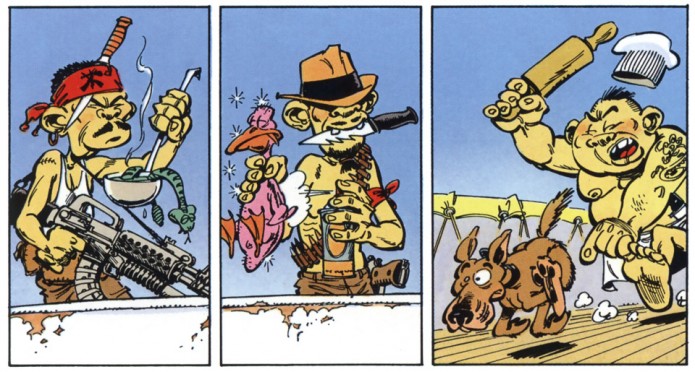
The absurdity is obviously part of the joke, and taking it so far beyond anything that could possibly be taken seriously arguably takes much of the sting out of it. It the kind of goofiness one might see in a Zucker-Abrahams-Zucker movie.
However, returning to New York in the 1995 adventure Luna Fatale (Spirou #45), the stereotypes are still there, but less obviously ridiculous. No longer is the whole thing played for laughs:
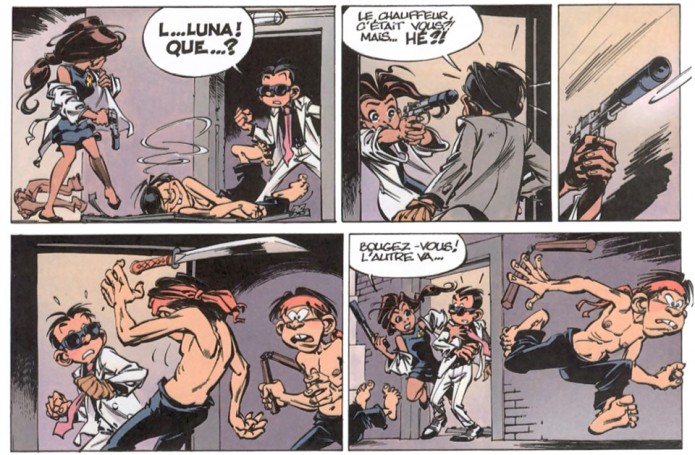
This change in tone means that the ironic distance threatens to collapse, and if we are worried about propagating stereotypes, presenting them in subtler form is perhaps more dangerous.
In between these adventures, Tome & Janry dealt directly with the topic of racism in Le rayon noir (Spirou #44, “The Black Ray”) from 1993, where a lab accident turns Spirou (and later others) black:
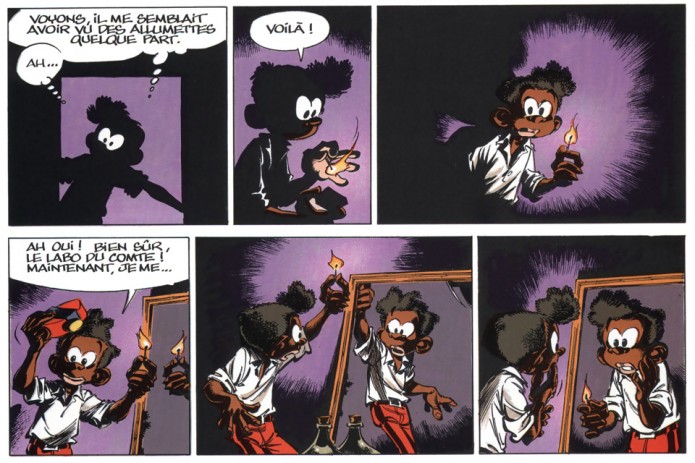
Although the notion of a white character in “blackface” and the way Janry’s drawing style uses thick-lipped, wide-nosed exaggeration to render African features might be considered offensive in some contexts, the story is quite clearly a well-intended parable (sometimes painfully sincere and didactic) against racism and xenophobia, and (as showing the same character before and after the ray’s effect demonstrates) the black faces are really no more caricatured than the white ones.
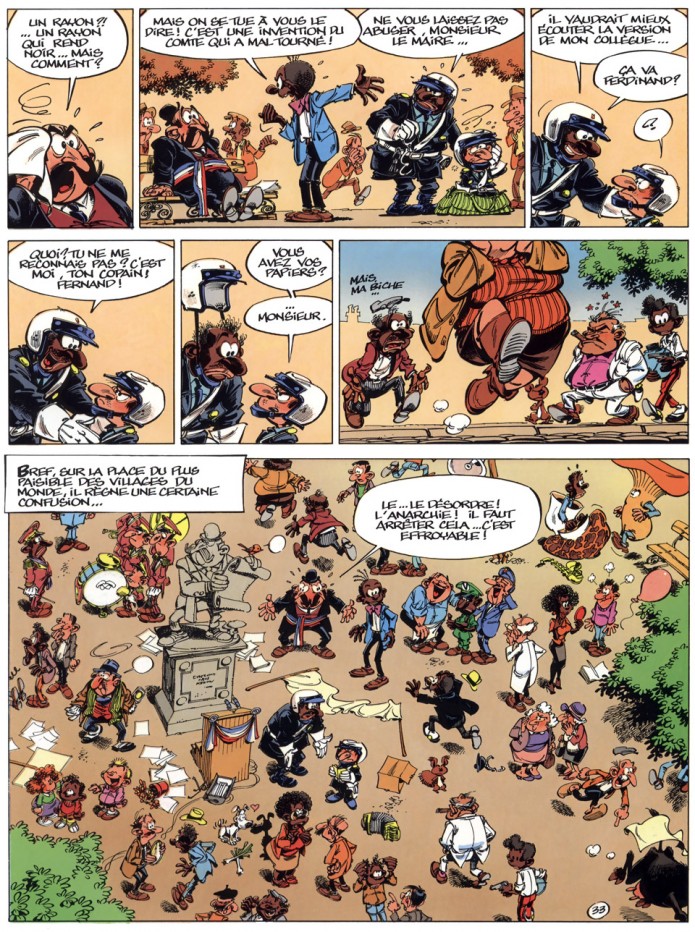
Tome & Janry’s attitude to racism – opposed to prejudice or unequal treatment, but willing to play with caricatures and stereotypes they see either as innocent or too grotesque for anyone to take seriously – is perhaps best expressed by this page from Le petit Spirou #3, Mais! Qu’est-ce que tu fabriques? (“Hey! What Are You Doing?”):
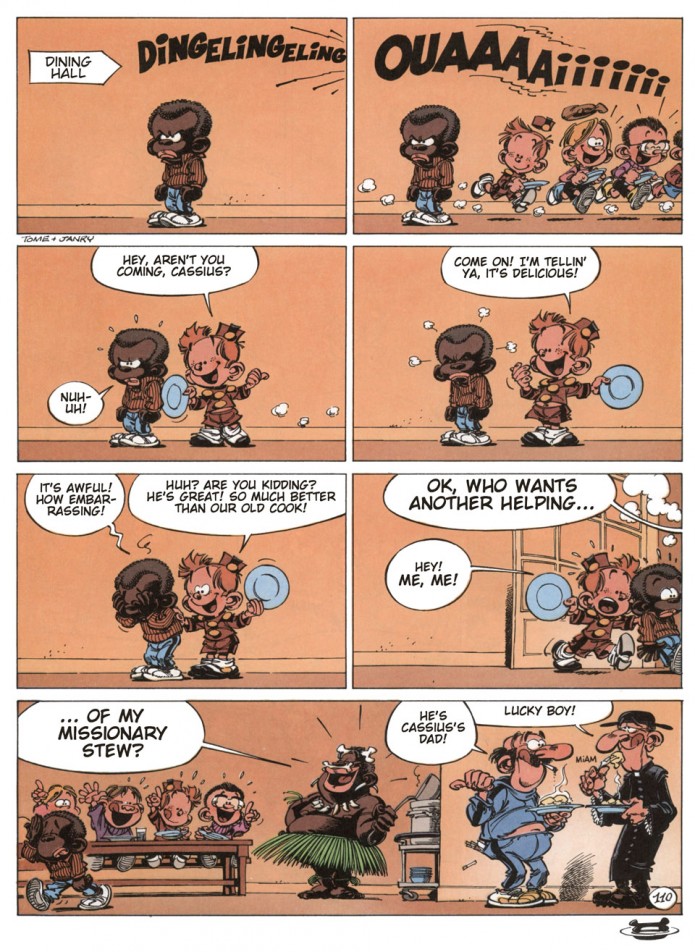
Personally I’m conflicted over this aspect of Tome & Janry’s work. I can see how people would get offended, and I’m not 100% convinced this kind of thing is totally harmless, but at the same time I really don’t think they mean any harm, and the general tongue-in-cheek zaniness of it all makes it hard to take it too seriously. In any case, I hope it’s something we’re past and won’t be seeing again in any future Spirou adventures.

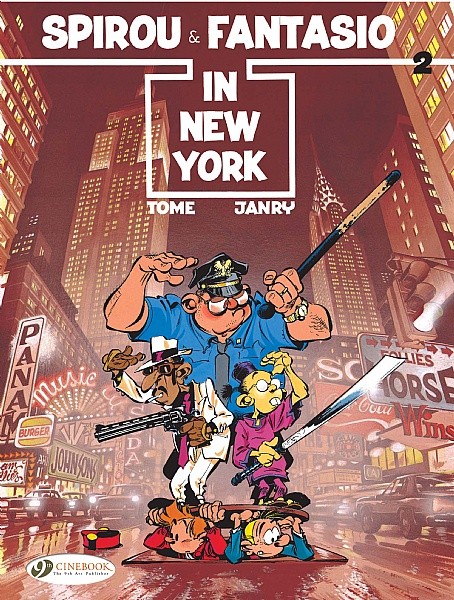
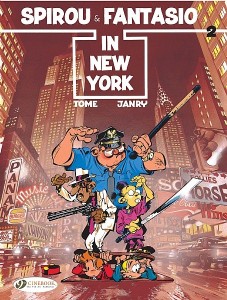

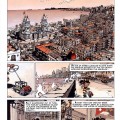
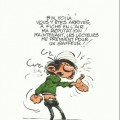
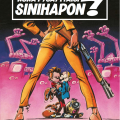
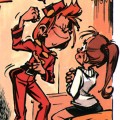
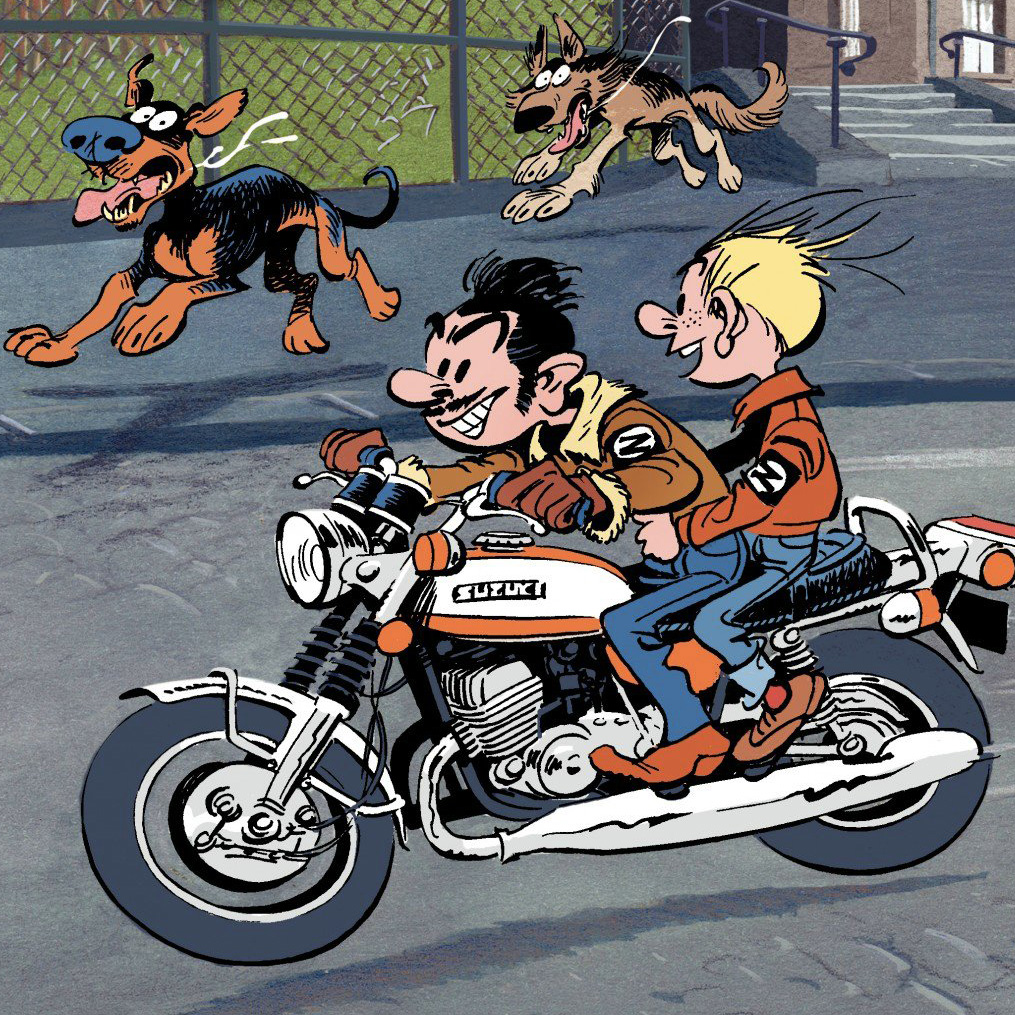

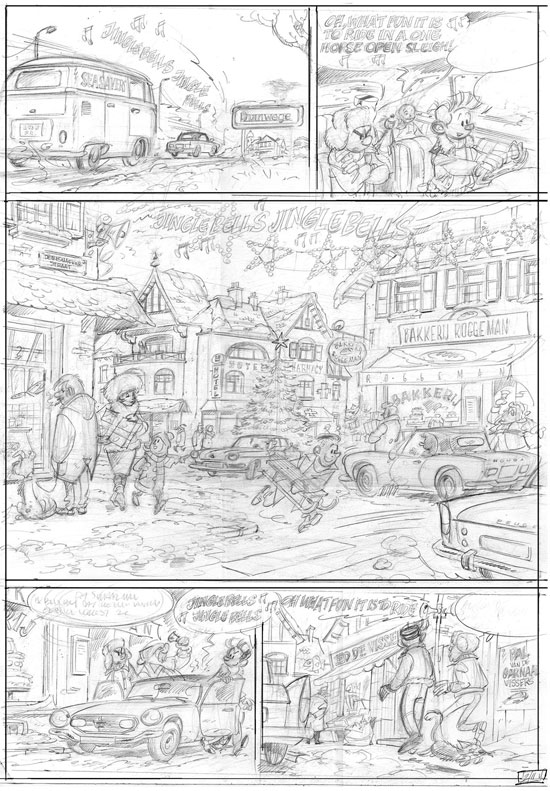
I read Tome & Janry’s Spirou as a child, and those albums didn’t appear to me as racists, and it certainly did not made me prejudiced. But I understand the need for discussing some of the old comics and their stands on racism. Racism is an ugly thing. Concerning the portrayals, in the picture with the subtitle “An ugly sinophobic, Orientalist stereotype”, there is also an oriental woman present, and she is pretty. The portrayals in “Spirou in New York” were not something I took seriously as a child. What I remember best from that album was how difficult and how big an impact the Wall Street Crash of 1929 and the great depression had on the society.
Just to clarify, Alex is calling the stereotype ugly, not the characters (necessarily). The woman is an example of the “submissive cheongsam-clad lovelies” he also mentions.
As for teaching about the Great Depression, the first frame shows the twin towers of the (former) World Trade Center, so the immigrants on that boat must be arriving some time after 1973. 🙂 Just one little anachronism in an album not exactly focused on historical accuracy.
Hey, thanks for a reasonable and well-argued response. I like your site, too!
Thanks Alex! I read the book as a kid, and I’ve been trying to think about if and how it may have affected me. I definitely understood that the caricatures were jokes and not to be taken seriously, but (just like the jokes at the expense of Brits, Belgians, Swiss, etc. in Asterix), I assumed that they were based on some truth, and I probably did internalize part of the stereotype.
For example, I remember that I was surprised by the “Chinese eat disgusting things” jokes, since my experience of Chinese food was only delicious stuff like soy beef and sweet’n’sour pork. I know I concluded that some Chinese people must eat some of that other stuff. That happens to be true, and I don’t think I was ever prejudiced about it, but it shows how I did pick up things from the album.
Similarly, while I understood that e.g. the leaning tower-style telephone booth was just a gag, I formed a mental image of Little Italy and of Chinatown (based not only on this album, of course) that was rather more exotic and romantic than reality turned out to be when I first visited New York. (I also had the impression that crime was rampant, but not just in these ethnic neighborhoods – in all of NYC. Not surprising, considering how ubiquitous the motif of the corrupt, dirty, dangerous Big Apple was in 80s pop-culture. By the time I got there, they’d cleaned up the city.)
But I’m having a hard time seeing any truly pernicious effects. I don’t believe I ever thought to extrapolate the characteristics of the villains to all Italian- or Chinese-Americans, for example. Perhaps the most harmful impression it made on me was the idea that it’s unproblematic to make fun of people from other cultures or ethnicities in this way, that it’s not something people ever get hurt by or offended over – or if they do, they’re just crybabies who can’t take a joke. Unlearning that lesson took a while.
Also, a rather heavy blow delivered at the Smurfs’ creator Peyo in that album, depicted as a money-driven stockbroker. (See Buchet’s review.)
This album was released around the height of the success of the TV series, so it’s likely T&J considered Peyo a sellout.
I wrote about this issue in similar terms when I was writing for FA Comiczine:
“…What’s most interesting about this book is appearances. It’s littered with racial stereotypes of the most offensive kind, from yellow peril Chinese with enormous buckteeth and droopy Fu Manchu mustaches, to greasy Italian pizza-loving mafiosos to irate big-lipped black cab drivers and more. This is often true of many of the bigfoot style artists in the European tradition. What is odd — and maybe I’m just not sensitive enough to the issue — is that they get away with it. In this book everybody is a caricature, exaggerated and idiosyncratic, and such indiscriminate tomfoolery results not in anything offensive, but amounts to an off-kilter Looney Tunes atmosphere…”
http://comiczine-fa.com/?p=3254
I believe in the right to laugh at all races, genders and human conditions, just as equally.